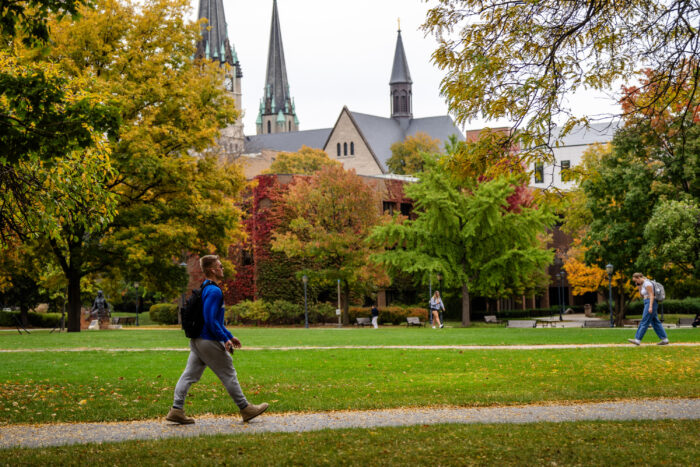Dental treatments often fail, but research from Dr. Ana Bedran-Russo, D.D.S., could lead to adhesives that work much better — and actually strengthen teeth.
By Anna Funk

Dr. Ana Bedran-Russo’s very first patient in dental school was in for a full set of dentures. Looking at the middle-aged woman’s chart, Bedran-Russo saw that she had been a patient at the school for 20 years. She had had root canals. She had gotten crowns — she had received proper dental care throughout her life. But it didn’t save her teeth.
“That just stuck with me,” Bedran-Russo says. “We treated her all these years, and she still lost all her teeth.”
Ever since, the now-professor and chair of Marquette’s Department of General Dental Sciences has been devoted to learning about the composition and structure of teeth in order to improve the materials used in dental treatments.
Her solution? She’s developing a new adhesive that bonds fillings and other dental treatments to a tooth. It’s twice as strong as mainstream adhesives, but that isn’t even the good part: Its plant-derived active ingredient actually strengthens the tooth itself. The innovation, for which Bedran-Russo received a $2 million four-year award from the National Institutes of Health (through its R01 program for major research projects), could finally make dental treatments built to last.

Sending in reinforcements
Dental treatments fail more often than anyone would like. Picture the cavity that needs a new filling or a new crown. Experts estimate that half of treatments made of resin composite (that’s the tooth-colored replacement material) need to be replaced. On average, they last only six years.
There’s nothing wrong with the fillings themselves, Bedran-Russo explains, rather it’s the boundary between tooth and treatment that causes trouble. For example, cavity fillings can get what are called “secondary caries” — a new cavity around the existing tooth filling.
When cavities are filled, dentists first drill out the decayed tissue. Before they place the filling, they paint the surface with a dental adhesive that will hold the filling in place. This is a sophisticated glue that can form molecular bonds with the collagen inside a tooth.
But these bonds are only as strong as the tooth’s foundation. Stronger teeth have more of what are called collagen crosslinks — they’re like extra support beams between the molecules.
Bedran-Russo discovered that compounds called proanthocyanidins (PACs) can be used to make more of the tooth’s strengthening links, which stabilize the tooth itself and create strong and stable bonds to the filling. The NIH grant is helping her hone this innovation.
Her group has been testing PACs from sources like grape seeds, cinnamon, pine bark and green tea leaves. They’re sustainable sources, especially grape seeds, which are a waste product from winemakers. “It’s trash for the wine industry, but it’s gold for us,” Bedran-Russo says.
In the lab, her team members work with donated teeth. They use diamond blades to slice the teeth into millimeter-thick sections. Then they polish them, test them, scan them and examine them every which way to see how strong they are after various treatments.
The end goal is to create a new dental adhesive that can be seamlessly swapped for the existing one, without changing procedures or equipment. “We don’t want to make dentists think more,” says Bedran-Russo.
One added challenge is the color. PACs are pink to reddish in color, she says. “Nobody wants their teeth to stain, so we are working on removing the color.”
Luckily, they’re on the case. Bedran-Russo’s team will keep polishing, slicing, poking and innovating in the quest to get it all just right.




